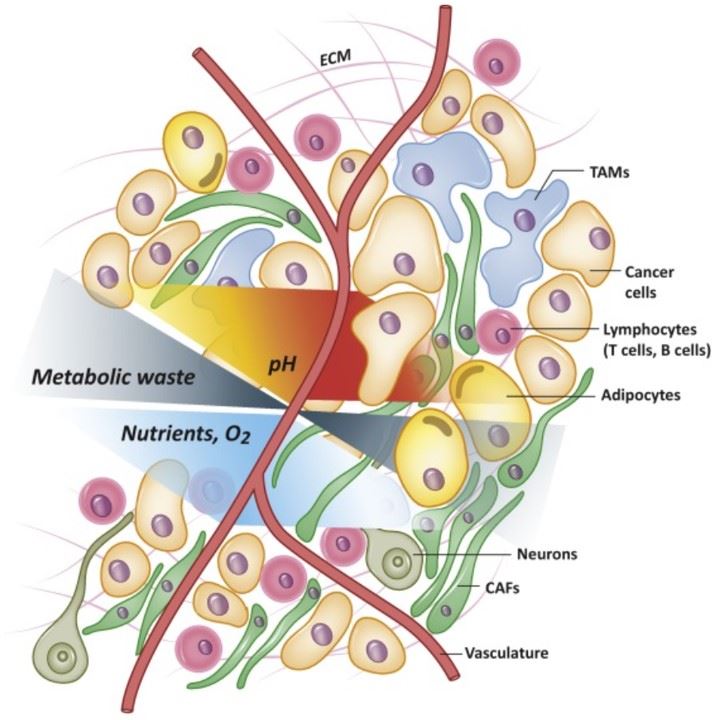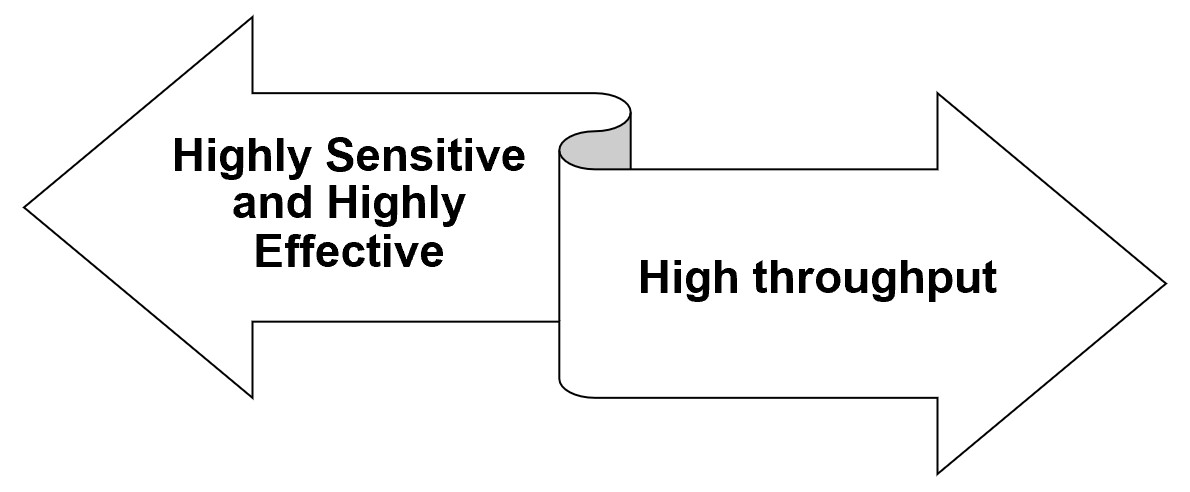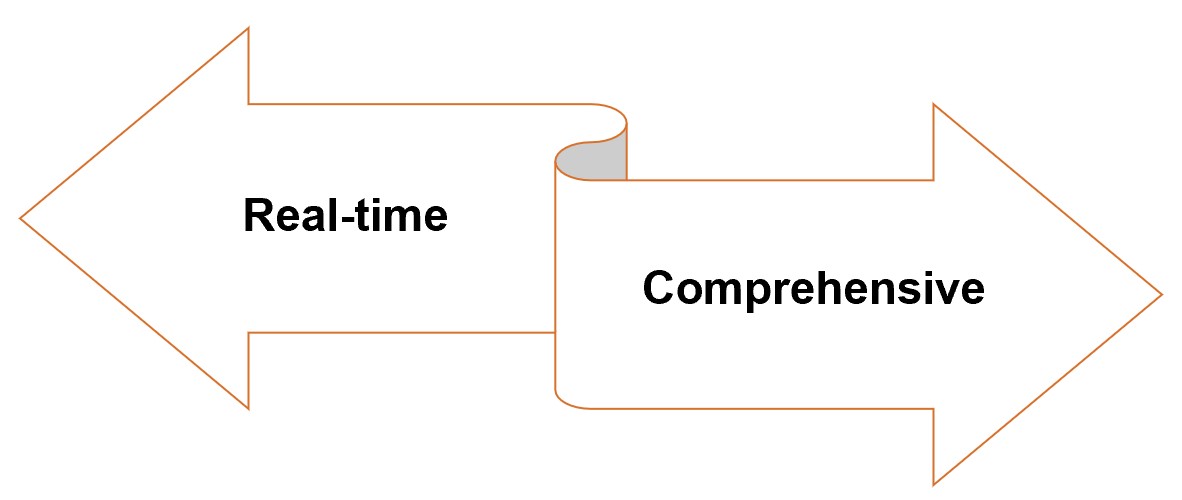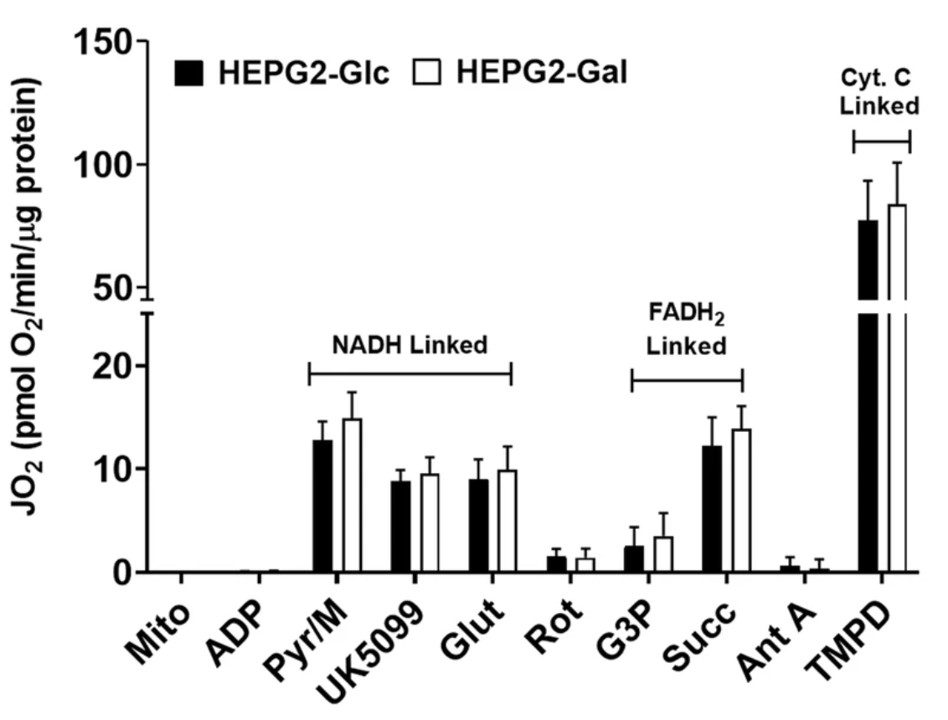Extracellular Flux Analysis (EFA) Service
Extracellular Flux Analysis (EFA): An Effective Tool to Characterize Tumor Metabolism
Currently, a variety of methods have been developed to study the characteristics of the metabolic reprogramming process of cancer cells. Among them, extracellular flux analysis (EFA) is an effective tool to characterize metabolism in cancer cells. Particularly, EFA is non-invasive and permits the real-time measurement of metabolism and the systematic evaluation of components of cellular oxygen consumption. As a result, developing an extracellular flux analysis (EFA) service is significant for targeted cancer treatments.
 Fig.1 Tumor microenvironmental factors contributing to metabolic heterogeneity.1
Fig.1 Tumor microenvironmental factors contributing to metabolic heterogeneity.1
Our Extracellular Flux Analysis (EFA) Service
Creative Biolabs succeeded in establishing an extracellular flux analysis (EFA) service platform featuring highly sensitive and highly effective. EFA measures the outcome of glycolysis by quantitatively measuring the oxygen consumption rate (OCR) of the mitochondrial electron transport rate, known as mitochondrial oxidative phosphorylation, and the extracellular acidification rate (ECAR) of lactate production. Based on this fact, we utilize oxygen-sensing fluorophores to detect OCR and pH sensors to detect ECAR in the same population of intact cells. At Creative Biolabs, we provide a full-around of services encompassing sample preparation to results presentation to meet global customers' diverse needs.
Key Features for Better Service


-
Highly Sensitive and Highly Effective: Our extracellular flux analysis (EFA) service is capable of simultaneously detecting OCR and ECAR in 24-well or 96-well plate measurements. This analysis can be performed on the same population of intact cells, even with a small sample size of approximately 10,000 cells.
-
High throughput: Our extracellular flux analysis (EFA) service can simultaneously detect multiple conditions.
-
Real-time: Our extracellular flux analysis service allows for the real-time testing of live cells.
-
Service: Our extracellular flux analysis service offers a comprehensive range of services, ranging from sample preparation to results presentation, to satisfy every customer.
Case Show
Case 1: The researchers used microscopy, respirometry, potentiometry, and extracellular flux analysis (EFA) to assess the metabolic alterations in HCC-derived (HEPG2) cells when subjected to glycemic growth medium conditions in this work. These findings reveal that the growth medium conditions have a considerable impact on the energy consumption of subculture tumor-derived cells, which may have important implications for chemotherapeutic sensitivity when utilized in combination with IOX test panels. A practical workflow based on the metabolic phenotyping approach developed in this study may be implemented in existing IOX screening processes to further examine the metabolic underpinning of chemotherapeutic drug sensitivity.
 Fig.2 Maximal respiratory capacities analyzed by EFA.2
Fig.2 Maximal respiratory capacities analyzed by EFA.2
Applications
Our extracellular flux analysis (EFA) service has the potential to be used to study that:
-
Mechanisms of Oncogenic Phenotype Metabolism
-
Variation of Cancer Cells
-
Survival of Cancer Cells
-
Drug Susceptibility Testing for Metabolic Vulnerability
-
Tumor Microenvironment Substrate Usage
Work with Creative Biolabs

Here we provide an inquiry mode for your convenience. If you want to know more about our extracellular flux analysis (EFA) service, please feel free to contact us.
References
-
Lyssiotis, Costas A., and Alec C. Kimmelman. "Metabolic interactions in the tumor microenvironment." Trends in cell biology 27.11 (2017): 863-875.
-
Schmidt, Cameron A., et al. "Aglycemic growth enhances carbohydrate metabolism and induces sensitivity to menadione in cultured tumor-derived cells." Cancer & Metabolism 9.1 (2021): 1-21.
For Research Use Only | Not For Clinical Use


 Fig.1 Tumor microenvironmental factors contributing to metabolic heterogeneity.1
Fig.1 Tumor microenvironmental factors contributing to metabolic heterogeneity.1


 Fig.2 Maximal respiratory capacities analyzed by EFA.2
Fig.2 Maximal respiratory capacities analyzed by EFA.2

 Download our brochure
Download our brochure